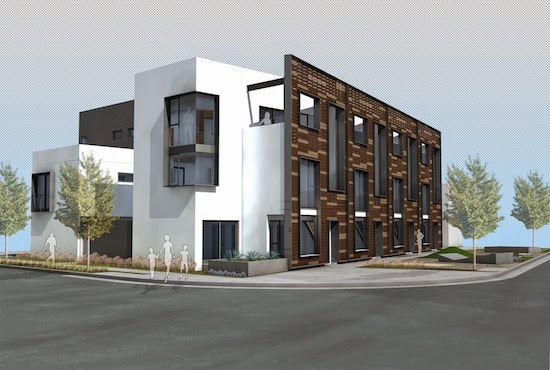Modern architecture or modernist architecture is the term used for the whole movement, the exact definition and scope varying widely. The term is often applied to the modernist movement at the turn of the 20th century, with an attempt to reconcile the principles underlying architectural design with rapid technological advancement and the modernization of society. This will take the form of various movements, schools of design, and architectural styles, some in tension with one another, and often equally opposed to the classification. Modern architecture can be used to distinguish the term from Classical architecture Vitruvian spirit of idealism, while it is also applied to a range of contemporary architectural styles such as post-modern, high-tech or even the New Classical, depending on the context. In the history of art, revolutionary and neoclassical styles that developed around 1800 also called modern. The concept of modernism is a central theme in modern architecture efforts of the 20th century. Getting global popularity, especially after the Second World War, architectural modernism was adopted by many architects and architectural educators, and continues as a dominant architectural style for institutional and corporate buildings into the 21st century. Modernism eventually generated reactions, notably Postmodernism which sought to preserve elements of the pre-modern, while the "neo-modernism" has emerged as a reaction to post-modernism. Notable architects important to the history and development of the modernist movement, including Ludwig Mies van der Rohe, Le Corbusier, Walter Gropius, Erich Mendelsohn, Frank Lloyd Wright, Louis Sullivan, Gerrit Rietveld, Bruno Taut, Arne Jacobsen, Oscar Niemeyer dangagasan that "Form follows function" , a phrase originally expressed by Frank Lloyd Wright's early mentor Louis Sullivan, which means that the results of the design should be derived directly from the goal simplicity and clarity of form and elimination of "unnecessary detail" material at 90 degrees to each other visual expression of structure (as opposed to the hiding of structural elements) related concept of "material truth", which means that the true nature or natural appearance of the material that has to be seen not hidden or altered to represent something else produced using industrial materials; adoption of the machine aesthetic particularly in International Style modernism, a visual emphasis on horizontal lines and vertikalSekitar 1900 a number of architects and designers around the world began to develop new solutions to integrate traditional precedents (classicism or Gothic, for instance) with new technological possibilities. The work of Louis Sullivan and Frank Lloyd Wright in Chicago, Victor Horta in Brussels, Antoni Gaudi in Barcelona, Otto Wagner and Vienna Secession in Austria, and Charles Rennie Mackintosh in Glasgow, among many others, can be seen as a common struggle between old and new. Works some of which are part of what is categorized as Art Nouveau ("New Art"). Note that the Russian word for Art Nouveau, and the Spanish word for Art Nouveau, "Modernismo" is a relative of the English word "Modern" though they carry different meanings. Early use of the term in print around this time, approaching the meaning then, is in the title of a book by Otto Wagner. The impact of the First World War led to additional experiments and ideas. After getting out of trial in the Art Nouveau and related movements around the world, modernism in architecture and design style that grew out of the threads from all over the world following the world-renowned architect building
,









